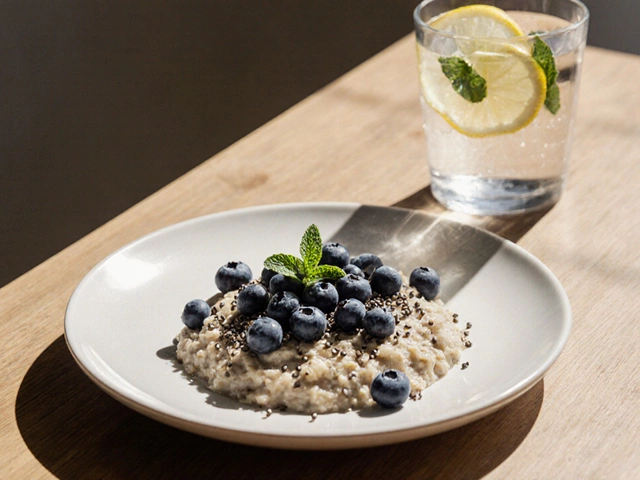How to Manage Gluten Symptoms and Keep Your Meals Safe
If you’ve ever felt bloated, sluggish, or just plain uncomfortable after a meal, gluten could be the culprit. Managing gluten symptoms isn’t about living in fear – it’s about getting smart, staying organized, and making tasty choices without the hassle.
First off, know the common sneaky sources. Gluten hides in soy sauce, some oat milks, and even in processed meats. When you’re grocery shopping, grab a pen and write down the top three items you’re unsure about. Then, check the ingredient list for words like wheat, barley, rye, malt, or ‘modified food starch.’ If you see any of those, toss it.
Label‑Reading Hacks That Save Time
Reading a label can feel like decoding a secret language, but a few shortcuts make it easy. Look for the ‘gluten‑free’ symbol – it’s the best quick sign. If the product is labeled ‘certified gluten‑free,’ you’re good to go. When there’s no symbol, scan the first five ingredients; if wheat, barley, or rye appear, skip it.
Don’t forget the ‘may contain’ warnings. Cross‑contamination can happen in factories that also process wheat. If you’re very sensitive, stay away from anything with a ‘may contain wheat’ note. A quick habit of checking these warnings can cut down surprise symptoms fast.
Meal Planning Without Missing Out
Planning meals ahead of time removes the stress of last‑minute decisions. Pick a few go‑to gluten‑free staples – rice, quinoa, potatoes, and beans. Pair them with fresh veggies and a protein like chicken, tofu, or fish. A simple stir‑fry using these basics takes under 20 minutes and keeps you in control.
Batch‑cook on weekends. Cook a big pot of rice or quinoa, roast a tray of mixed veggies, and grill a chicken batch. Store everything in portioned containers. When hunger hits during the week, just grab a pre‑made combo, heat, and eat. No need to worry about hidden gluten because you already know what’s in each container.
Snacks are another area where hidden gluten loves to hide. Keep a stash of plain nuts, fresh fruit, yogurt, or gluten‑free crackers. If you crave something salty, pop a bag of popcorn – just make sure it’s labeled gluten‑free.
Finally, listen to your body. If a new food makes you feel off, write it down in a symptom journal. Over time you’ll spot patterns and know exactly which foods to avoid. Pair this with the label hacks and meal planning, and you’ll notice fewer flare‑ups.
Managing gluten symptoms is all about making small, consistent changes. With a quick label scan, a few reliable pantry items, and a simple weekly prep routine, you can enjoy tasty meals without the guesswork. Your gut will thank you, and you’ll feel more energetic every day.

Understanding Gluten Withdrawal Symptoms and How to Manage Them
by Landon Weathers / 7 Dec 2024Transitioning to a gluten-free diet can lead to withdrawal symptoms, surprising to many who cut out gluten for the first time. It's not just about changes in food habits; it involves balancing your body's reaction to a new way of eating. Understand the symptoms you might face, such as headaches and fatigue, and learn valuable tips to ease the process. This article provides practical advice and insights for those embarking on a gluten-free journey, making the transition smoother and more pleasant.



